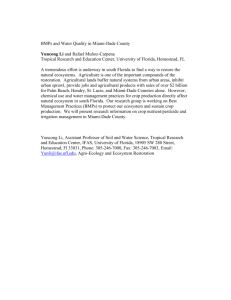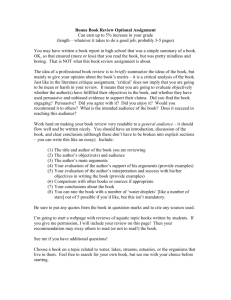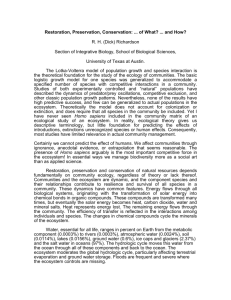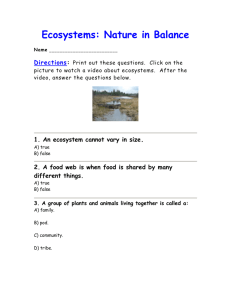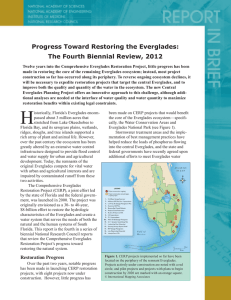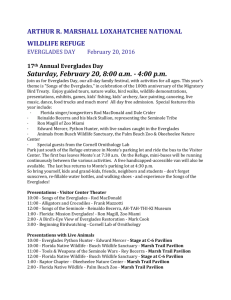An Assessment of Mercury Exposure for Multiple Trophic Levels in
advertisement
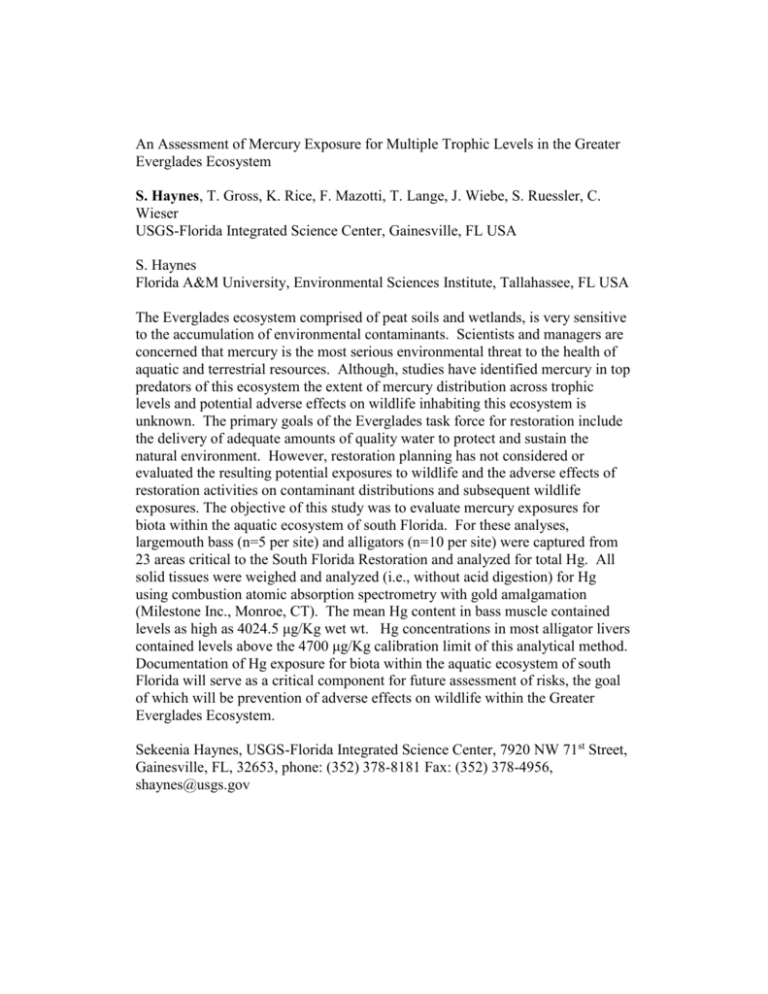
An Assessment of Mercury Exposure for Multiple Trophic Levels in the Greater Everglades Ecosystem S. Haynes, T. Gross, K. Rice, F. Mazotti, T. Lange, J. Wiebe, S. Ruessler, C. Wieser USGS-Florida Integrated Science Center, Gainesville, FL USA S. Haynes Florida A&M University, Environmental Sciences Institute, Tallahassee, FL USA The Everglades ecosystem comprised of peat soils and wetlands, is very sensitive to the accumulation of environmental contaminants. Scientists and managers are concerned that mercury is the most serious environmental threat to the health of aquatic and terrestrial resources. Although, studies have identified mercury in top predators of this ecosystem the extent of mercury distribution across trophic levels and potential adverse effects on wildlife inhabiting this ecosystem is unknown. The primary goals of the Everglades task force for restoration include the delivery of adequate amounts of quality water to protect and sustain the natural environment. However, restoration planning has not considered or evaluated the resulting potential exposures to wildlife and the adverse effects of restoration activities on contaminant distributions and subsequent wildlife exposures. The objective of this study was to evaluate mercury exposures for biota within the aquatic ecosystem of south Florida. For these analyses, largemouth bass (n=5 per site) and alligators (n=10 per site) were captured from 23 areas critical to the South Florida Restoration and analyzed for total Hg. All solid tissues were weighed and analyzed (i.e., without acid digestion) for Hg using combustion atomic absorption spectrometry with gold amalgamation (Milestone Inc., Monroe, CT). The mean Hg content in bass muscle contained levels as high as 4024.5 μg/Kg wet wt. Hg concentrations in most alligator livers contained levels above the 4700 μg/Kg calibration limit of this analytical method. Documentation of Hg exposure for biota within the aquatic ecosystem of south Florida will serve as a critical component for future assessment of risks, the goal of which will be prevention of adverse effects on wildlife within the Greater Everglades Ecosystem. Sekeenia Haynes, USGS-Florida Integrated Science Center, 7920 NW 71st Street, Gainesville, FL, 32653, phone: (352) 378-8181 Fax: (352) 378-4956, shaynes@usgs.gov
